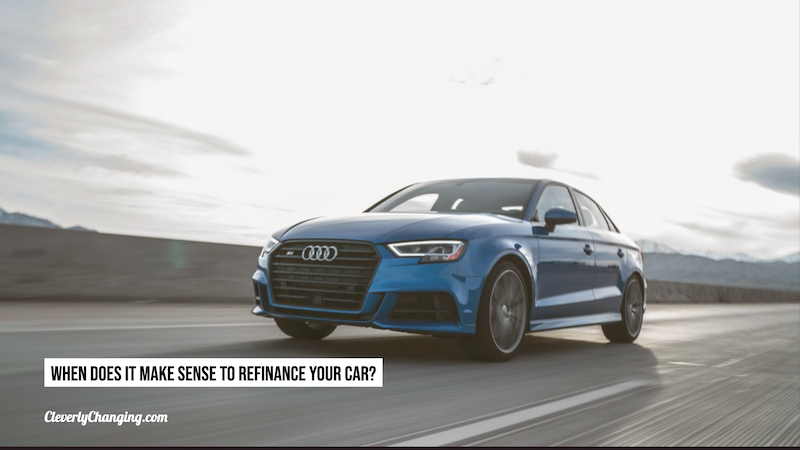The car buying experience is one fraught with irritation for many people. As a result, they tend to look at it as something they have to do every five years or so, without giving it another thought in between.
This could be a mistake.
Those people might be missing an opportunity to save money by refinancing their cars. The loan they signed at the dealership could be far more expensive than another one for a number of reasons.
Here’s when it makes sense to refinance your car.
Refinance Your Car, This is How Refinan Works
Simply put, you’ll take out a new loan to pay off the existing one. Just like your original loan, it’s secured by the title to the car and you’ll pay it off the same way. However, if done properly, refinancing your car loan could make it a lot more affordable. You might find a lower interest rate than the one you currently have, or you could extend the loan term to make your payments more affordable — though you do need to be more careful with that one, as we’ll illustrate below.

Instances When Refinancing Can Be Beneficial
1. Falling Interest Rates
If you pay attention to the financial pages (and you should) you may have noted interest rates are fluid. They go up and down with the federal funds rate established by the Federal Reserve. If you got your car loan when rates were high, you’re paying more for it. If rates should fall during the first couple of years of your loan contract it’s probably worthwhile to refinance to take advantage of the lower rate. Even one or two points can make a significant difference in the total amount you’ll pay for your car.
2. Your Credit Score Has Improved
If you were just coming out of a rough patch and you had to buy a car before you were completely clear, your credit score may have dictated a higher interest rate for your loan. To give you an idea of how significant this can be, you’ll pay 13.16 percent on a new car loan in the current market if your credit score is 649. However, you can get a refinance car loan at 8.04 percent if your score goes up to 650.
If you paid $30,000 for your car over 60 months at 13.16 percent with a $6,000 down payment, your car note will be $548.04. That same loan, with the same terms, at 8.04 percent reduces the monthly payment to $487.09. The car would cost a total of $38,882.40 with the first loan. Meanwhile, you’d only pay $35,225.40 at 8.04 percent.
This credit car
3. You’re Having Trouble Making the Monthly Payment
Fortunes change. Sometimes hardships occur and you’ll need to find a way to make your monthly budget go farther. Even if your credit score and interest rates are unchanged, you can lower your monthly payment by refinancing into a longer term.
Let’s look at our example above once again.
That $548.04 monthly payment over 60 months drops to $438.70 if you spread it over 84 months. This effectively puts $110 back into your monthly budget. However, it also makes the car cost more. You’ll pay a total of $42,850.80. This is why you have to be careful when you’re refinancing into a longer term at the same interest rate.
Instances When Refinancing Can Be Detrimental
As we mentioned above, longer-term loans will cost more, so you need to be careful with those. Refinancing can also put you in an upside-down situation in which you owe more on the car than its market value.
It’s also critical to take note of where you are in your car loan. Refinancing can actually set you back if you’ve paid off a sizable portion of the loan. Similarly, refinancing might not be possible if your car is older. Most lenders go back seven years or 75,000 miles on these loans. You should also take note of the potential fees you’ll encounter.
As you can see, there are number of critical factors to consider when determining whether or not it makes sense to refinance your car. Following these guidelines will help you make the smartest decision.



